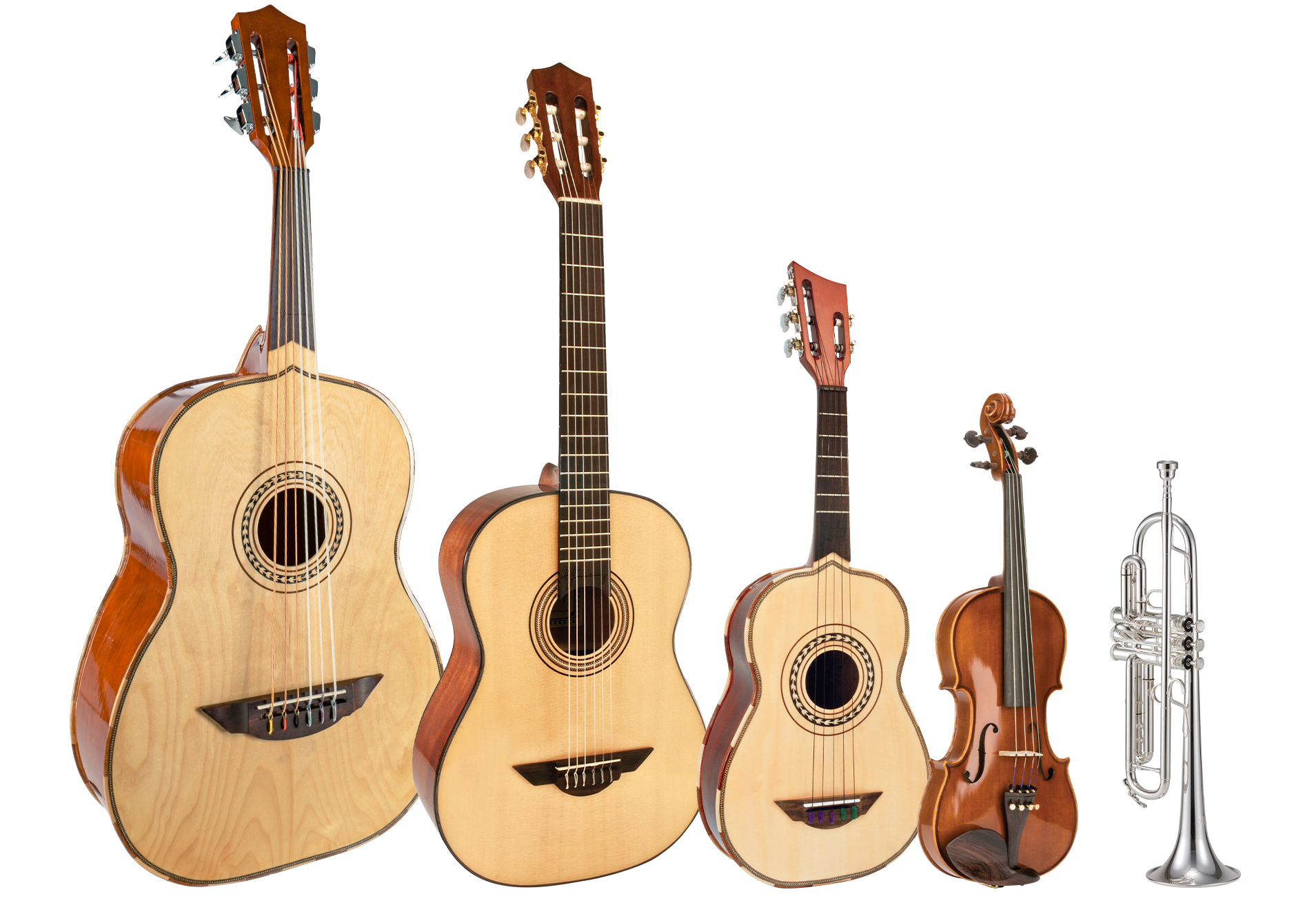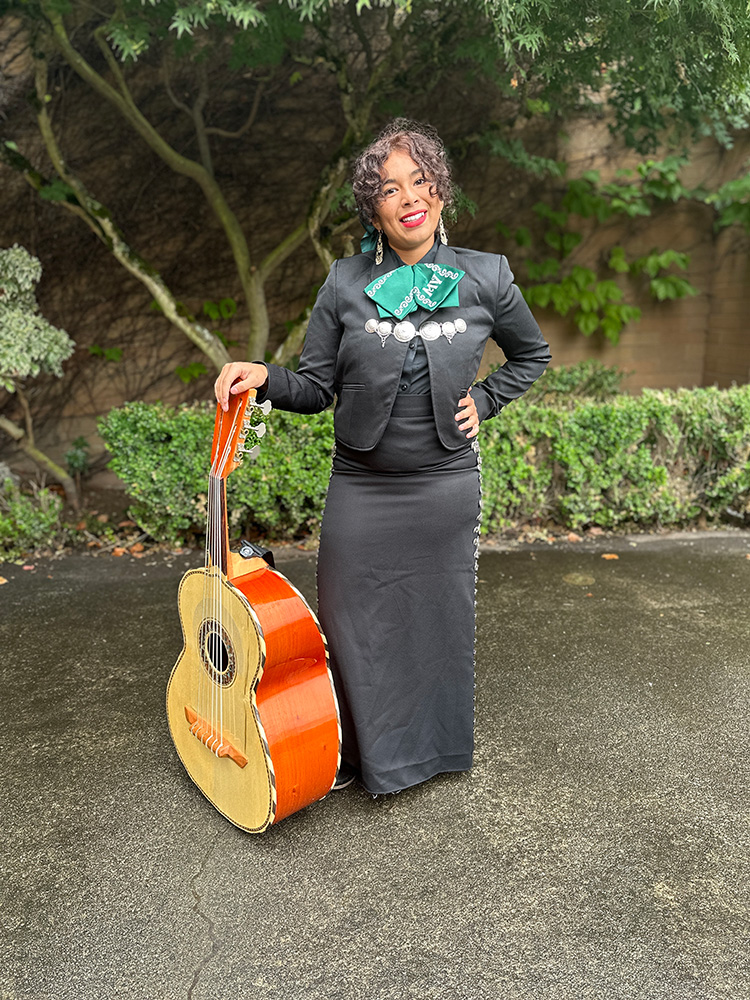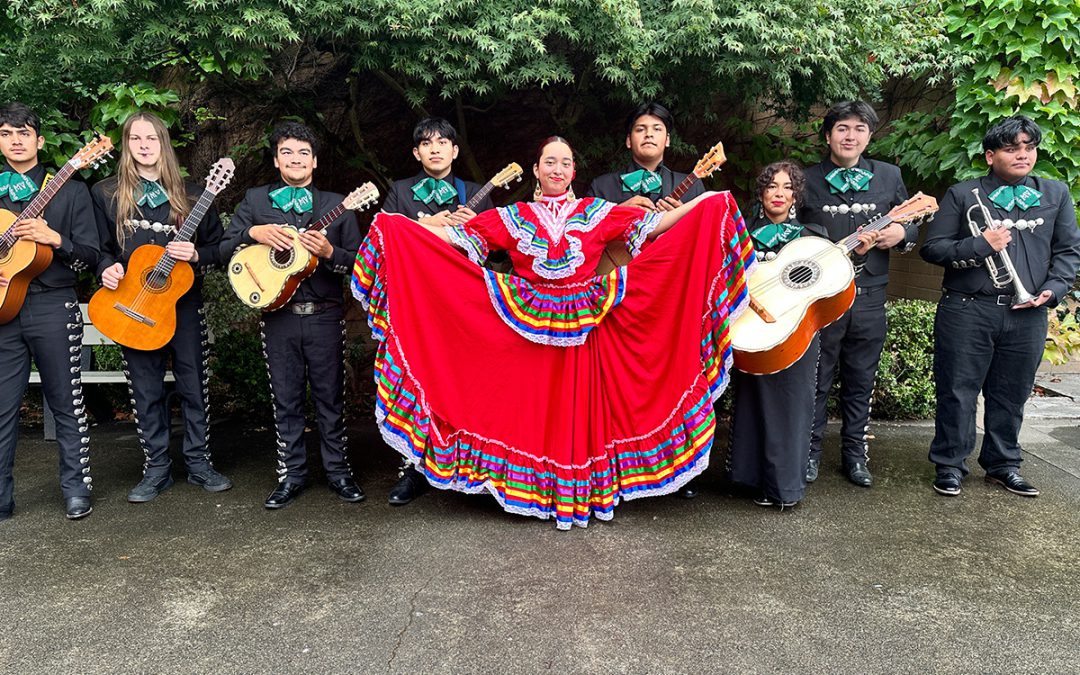Adding Mariachi classes to your school music program can be a game-changer in various ways. Aside from increasing your enrollment numbers, it is a great way to open pathways for students who would not have considered participating in a music program or other extracurriculars. This wonderful genre is powerful in reaching students from various backgrounds and serves as a tool for establishing connections with those students. My name is Ramon Rivera and I am an XO Trumpet artist, a Mariachi Teacher for 25 years, and a Mariachi Clinician. Last year I was the 2023 Washington State Music Teacher of the Year.
What Is Mariachi And What Are The Instruments?
 Mariachi is an ensemble of musicians that play the traditional music of Mexico, not typically referred to as a “Mariachi Band,” just simply a Mariachi. There are many theories about its origin, but it is clear that as it evolved, it retained the element of pride and passion. You will often see Mariachi ensembles of family members who have carried the tradition for the generations before them. As the modern world began to embrace the genre it gained popularity through various pop artists, creating a platform for Mariachi music to be in demand. This opened the door to a variety of styles, approaches, and interpretations. I walked through the door of Mariachi in schools.
Mariachi is an ensemble of musicians that play the traditional music of Mexico, not typically referred to as a “Mariachi Band,” just simply a Mariachi. There are many theories about its origin, but it is clear that as it evolved, it retained the element of pride and passion. You will often see Mariachi ensembles of family members who have carried the tradition for the generations before them. As the modern world began to embrace the genre it gained popularity through various pop artists, creating a platform for Mariachi music to be in demand. This opened the door to a variety of styles, approaches, and interpretations. I walked through the door of Mariachi in schools.
The violin, trumpet, and guitar are standard instruments for most string ensembles, but the guitarrón and vihuela are unique to Mariachi. When these instruments combine you’ll experience a musical adventure that carries history, tradition, and treasured stories that will help you grow as a Music Educator. Let’s go over the Instruments that make up a Mariachi.
The guitar used in Mariachi is a classical nylon six-string guitar, tuned E, A, D, G, B, E. The guitar is part of the Armonia section, and it is responsible for keeping the rhythm of a song along with the guitarrón and vihuela. A great guitar to consider is a H. Jimenez Ranchero Series nylon string guitar. This one is easy to play and does well for Mariachi students. I also recommend avoiding a metal string guitar for Mariachi as it is not traditional to the genre and will likely not blend well with the vihuela.
The vihuela is part of the Armonia section of the Mariachi, keeping rhythm with the guitar and guitarrón. It may appear like a small guitar but it is an instrument unique to the genre. It has five strings tuned A, D, G, B, E with three of its strings tuned one octave higher than a classical nylon guitar. The vihuela is fun to play with the different strumming patterns only heard in Mariachi. Many of the vihuela chords are the same as classical guitar except for G, C, and a few others.  Most vihuela chords are in first position, so if you have played guitar it is an easy transition to vihuela. Next would be learning the strumming pattern in 3/4 and 4/4 time, which is good for beginner students. There are vihuela chord charts online to help guide you as you get to know this unique instrument. A great beginner vihuela is the H. Jimenez Quetzal Vihuela. This one is perfect because it is made to last, has a fingerboard the same as a guitar, and is easy to tune. For the more advanced player, consider the H. Jimenez Handcrafted line made in Mexico. This vihuela has a rich deep sound and is great for advanced players.
Most vihuela chords are in first position, so if you have played guitar it is an easy transition to vihuela. Next would be learning the strumming pattern in 3/4 and 4/4 time, which is good for beginner students. There are vihuela chord charts online to help guide you as you get to know this unique instrument. A great beginner vihuela is the H. Jimenez Quetzal Vihuela. This one is perfect because it is made to last, has a fingerboard the same as a guitar, and is easy to tune. For the more advanced player, consider the H. Jimenez Handcrafted line made in Mexico. This vihuela has a rich deep sound and is great for advanced players.
The standard violin used in the orchestra works well for the Mariachi sound: a four-string violin played with a bow tuned G, D, A, E. The H. Jimenez Primer Nivel violin is designed for a strong tone to match the sounds needed to play Mariachi Music. The H. Jimenez violin features heart-shaped pegs, an Aubert bridge, and prelude strings.
A B-flat trumpet works well in band and Mariachi class. The student will learn to play keys in A, D, and E and will learn scales with many sharps. The trumpet is the most noticeable instrument when you hear a Mariachi, with a powerful sound and a melodic vibrato. A great starter trumpet is the Jupiter Standard Series Trumpet JTR700SA. It is a good all-around trumpet. For a more advanced trumpet student, you can try the JTR1100SQ Jupiter Performance Level Silver Trumpet. It is a great trumpet for the rich, deep Mariachi sound and a trumpet of choice by professional Mariachi musicians.
The Heart of the Mariachi is the guitarrón. This is a bass guitar that unites the Armonia section, rounding out the rhythm of each tune. It is tuned A, D, G, C, E, A and is played with two strings at the same time, except for G. The guitarrón has a full sound and makes a great portable acoustic bass. Start with a C Scale so you can get comfortable playing the notes with two strings simultaneously with a pulling or plucking of the strings. A great beginner guitarrón is an H. Jimenez LGTN2. This instrument is well made and the tuners on this guitarrón are easy to use for fast tuning. For advanced players consider the H. Jimenez Handmade in Mexico Guitarrón LGTN1M. This guitarrón has a professional sound, easy action, and comes with a hard shell case.
Sheet Music
Mariachi Music is traditionally passed down by family members teaching their younger family members how to play Mariachi instruments and perform traditional songs. Now that Mariachi Music is taught in public schools anyone can learn Mariachi. Major Publishers, such as Hal Leonard, have sheet music with full scores that can be obtained at your local music store, available from beginner to advanced. There are various Mariachi method books for purchase that you can use as a guide as you start your Mariachi Program.
First Steps Of Starting Your Mariachi Program
One option for starting could be obtaining a set of Mariachi instruments and sheet music and gauging interest with a before or after-school Mariachi Club. Make it available for beginner students and encourage your current music students to join as they can help the beginners with peer teaching. This is an excellent way to reach students who have never played an instrument before. If needed, ask for support from Spanish-speaking staff to help you make posters and create awareness of this opportunity. It is likely that the Spanish-speaking staff have built connections with families and the community and can encourage parent/guardian support.
One of the key elements in Mariachi education is relatability. Students get inspired and pumped up when they imagine themselves playing a tune that has been traditionally played at family gatherings or while sharing an activity with their loved ones. Don’t let this intimidate you because students will naturally gravitate to what they can relate to. Soon enough you will have students asking to play certain songs! A great beginner song to consider is Arboles de La Barranca in the Key of C or D. This song has two easy chords and Arboles de La Barranca is a song students have heard on the radio. I would also recommend playing a song like Tu Solo Tu by Selena. This song has two chords and can be easily played with the recording.
That sounds like an exciting initiative! Here’s a way to structure your approach to Mariachi with the students:
Embracing Mariachi In The Classroom
 My final words of advice for starting your Mariachi Program:
My final words of advice for starting your Mariachi Program:
- Start With A Personal Connection
Have students share stories. Start by inviting students to share what Mariachi music means to them and their families. You could create a circle time where everyone has a chance to speak.
What is the Cultural Significance: Discuss how Mariachi reflects their cultural heritage and family traditions, reinforcing pride and identity. - Easy Song Selection
Choose a Couple of Songs: Pick one or two popular Mariachi songs that are accessible and fun, like “La Culebra” or “Cielito Lindo.” Focus on making these the best they can be, emphasizing quality over quantity.
Learning Together with the Students: Encourage students to help each other learn the songs, creating a collaborative environment. - Performance Opportunities
Casual Settings Performances: Organize performances at various school events, parent nights, open houses, or even basketball games. This creates a relaxed atmosphere and encourages participation.
Community Involvement: Invite families and friends to these performances to build a sense of community and shared experience. - Building Pride
Celebrate Achievements: Highlight the accomplishments of the students during performances. Encourage them to take pride in their heritage and their role as performers.
Create a Welcoming Environment: Ensure that newcomer music students feel welcomed and excited about participating.
By focusing on the cultural significance of Mariachi and creating meaningful performance opportunities, you’ll foster a love for music and strengthen the community. This approach not only enhances students’ self-esteem but also promotes cultural pride and school spirit!
About the Author
RAMON RIVERA, a Mariachi Music Educator, is a distinguished figure in music education, serving as the Director of Mariachi in the Mount Vernon School District in Mount Vernon, Washington. Mr. Rivera has been heralded as a trailblazer, receiving numerous awards and accolades for his dedication and innovative approach to teaching. As a respected clinician, he has shared his expertise through classes and workshops throughout the United States Mr. Rivera’s contributions to music education have been recognized on both state and national levels, earning him prestigious honors including The Washington State Golden Apple Award, Seattle Seahawks Latino Leader of the Year, and the CMA Foundation National Teacher of Excellence. Notably, Mr. Rivera’s School Mariachi Group has been honored to perform for renowned figures such as Garth Brooks, George Lopez, Pepe Aguilar, and Mariachi Sol de Mexico, captivating audiences at festivals across the United States. In 2023, Mr. Rivera continues to exemplify excellence as the Washington State Music Teacher of the Year.
The content of this Blog article or Banded Story is the intellectual property of the author(s) and cannot be duplicated without the permission of KHS America and/or the author(s). Standard copyright rules apply.


